
1948 was the year when an exclusive state for followers of the Judaism religion was created in West Asia and thus came to be known as Israel. It was the same year when more than half of the land that once belonged to the Arab state of Palestine went over to Israel.
1948 was the year when tensions between the two nations ensued, which resulted in what we call today the world’s longest-running dispute: the Israel-Palestine conflict. As complicated as it had been from the outset, it is crucial to understand how this contentious issue has affected how we observe international relations and how this conflict is at the center of the geopolitics of the Middle East in the current scenario.
Sowing the Seeds of a Territorial Conflict

When the British defeated the Ottoman Empire (who ruled most of the Middle East) during World War I, they subsequently seized control of the Palestine region. The Palestinian Arabs constituted a majority, whereas Jews who had taken refuge in the territory formed a minority. Tensions between the two groups intensified when the international community assigned Britain the mission of establishing a “national homeland” in Palestine for Jews, for which the British had issued a public statement known as the Balfour Declaration in 1917.
For long, the Jewish people and Zionists had maintained that the land was indeed their place of origin and ancestral home. However, Palestinian Arabs vehemently opposed the move as they also claimed the land as belonging to them.
From the 1920s till the 1940s, the number of Jews immigrating to Palestine grew exponentially. Many arrived as refugees, as they were subjected to severe persecution and anti-Semitic attitudes in war-torn Europe and were seeking a homeland in Palestine after the terrible Holocaust of World War II. In addition, hostility between Jews and Arabs and against British rule increased.
First Major Conflict That Started It All: 1948 Arab-Israeli War
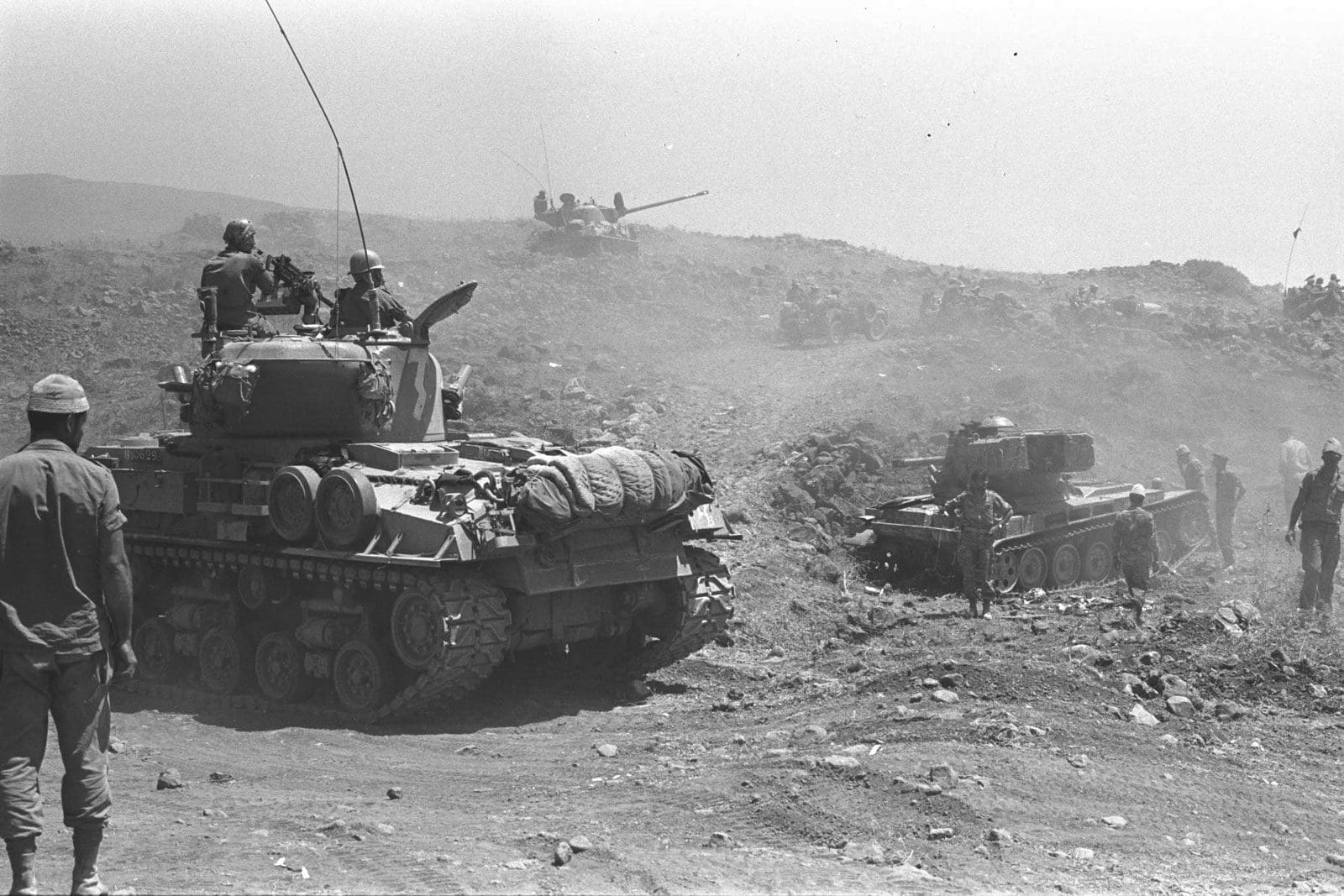
Moving further to 1947, the United Nations voted for Palestine to be partitioned into separate Jewish and Arab states, with the old city of Jerusalem coming under international jurisdiction. That plan was agreed upon by Jewish leaders but rejected by the Arab side and was never implemented.
Clashes between Jews and Arabs in Palestine broke out about instantly. The conflict continued to intensify, even as the British prepared to retreat their troops from Palestine. Both the Jewish and Arab forces perpetrated assaults against each other.
Before the day Britain withdrew their forces from Palestine completely, the State of Israel declared independence on May 14, 1948. The following day, Arab League states such as Egypt, Transjordan (present-day Jordan), Syria, Iraq, and Lebanon, having formed a military coalition, marched into various areas of former Mandatory Palestine, unoccupied by Jews.
They were essentially intervening on behalf of Palestinian Arabs fighting against the Yishuv (Jews who had already settled in Israel before its formation). This movement thus began the main phase of the First Arab-Israeli War in 1948.
Nakba, or the Palestinian Catastrophe: Not to be Forgotten
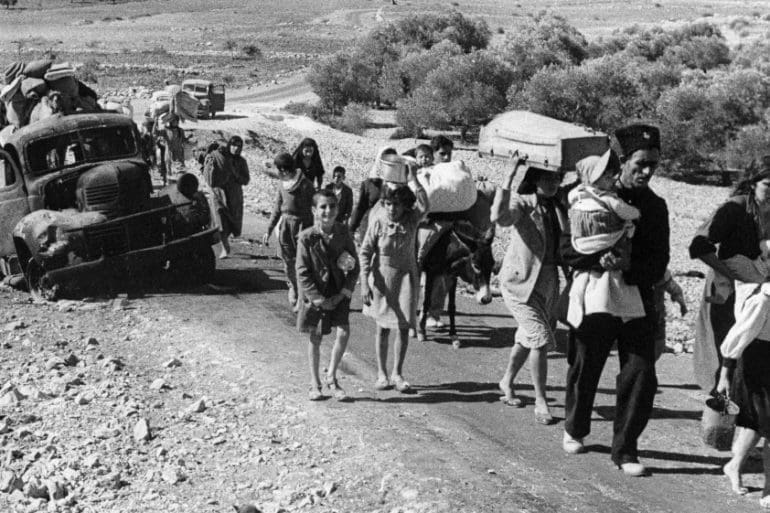
As a consequence of the destructive 1948 Arab-Israeli War, with which Israel emerged victoriously, hundreds of thousands of Palestinians were permanently displaced from their homeland. This large-scale tragedy was called the Nakba, or in other words, the Palestinian Catastrophe.
Currently, the term is synonymous with the continued persecution and occupation of Palestinians by the Israelis in West Bank and Gaza Strip regions.
Nearly a massive number of 700,000 Palestinian Arabs fled their homes and became refugees. The exodus was the leading cause of obliterating the Palestinian society and wiping out over 400 Palestinian villages. By the time the Palestine war concluded in a ceasefire in 1949, Israel had annexed more than 75 percent of Palestine territory. This was way beyond the partition borders proposed by the UN for the Jewish state, usurping most of the land intended for the Palestinian Arab state.
Shortly after the war, Jordan annexed the West Bank, and Egypt occupied Gaza. The city of Jerusalem, which is a holy site important to Christians, Jews, and Muslims alike, was divided so that Israel occupied West Jerusalem and East Jerusalem was occupied by Jordan.
The Birth of Palestine Liberation Organisation and 1967 Six-Day War
The Palestine Liberation Organization (PLO) was founded in 1964. The organization’s primary objective was to establish a Palestinian Arab state on the territory previously governed by the British, which the PLO claimed to be occupied illegally by the State of Israel. In 1969, Yasser Arafat, one of the most prominent Palestinian leaders, became the Chairman of PLO and remained so, until his death in 2004.
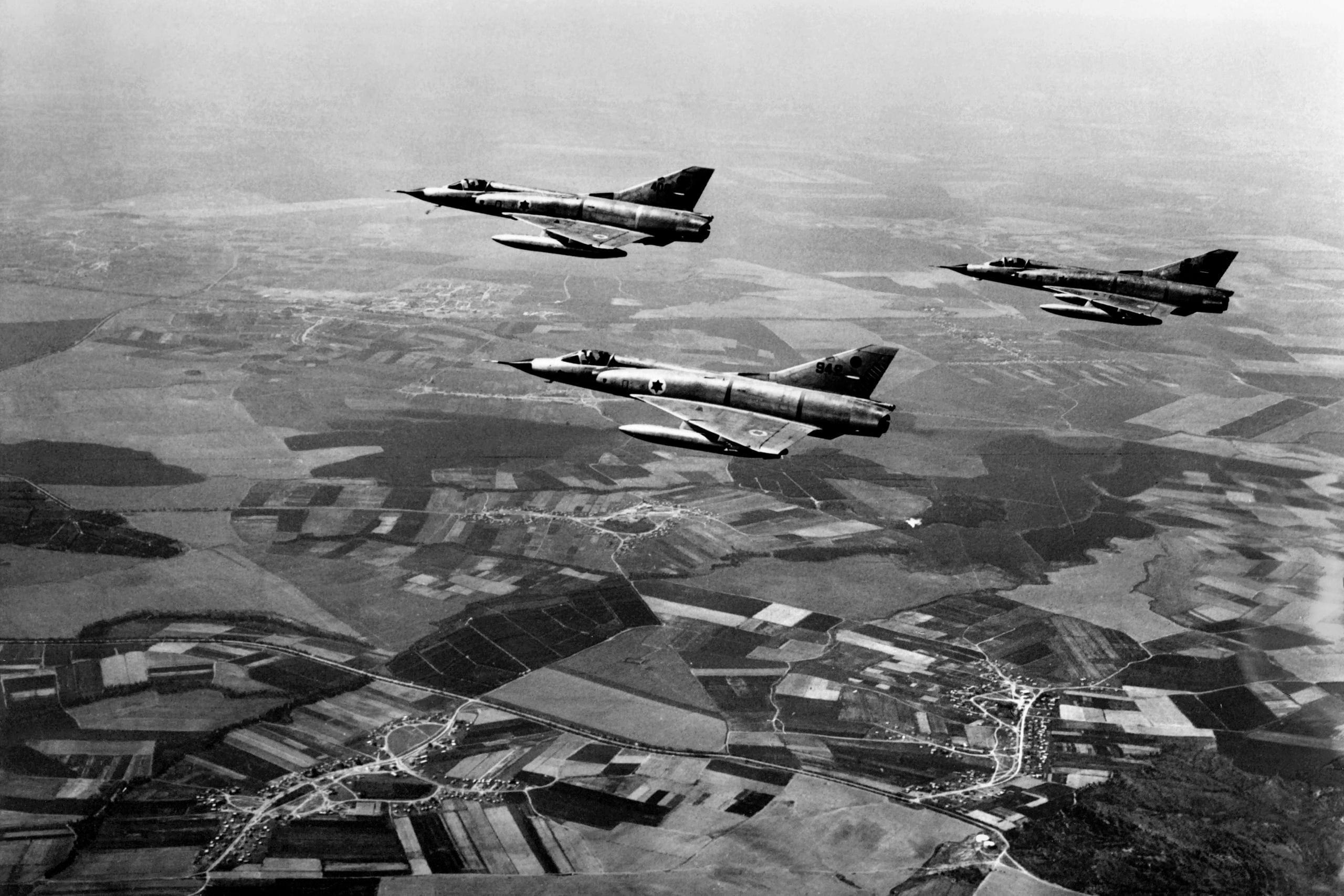
The Six-Day War occurred in 1967, during an unstable period of political strife and battles between Israel and its neighbors. The clashes aggravated after Israel and Syria fought a vicious air and artillery tussle.
The Egyptians, in defense of Syria, sprung to action by advancing its forces into the Sinai Peninsula (a desert region located between the Mediterranean Sea and the Red Sea), where they expelled a UN peacekeeping force that had long been protecting the border with Israel.
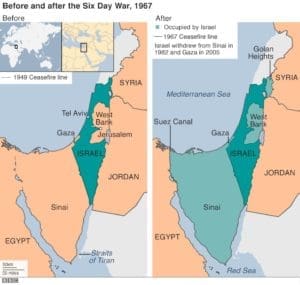
On June 5, 1967, Israel Defense Forces (IDF) then unleashed a pre-emptive aerial strike against Egypt in response. Both nations contended that they were acting in self-defense in the ensuing conflict, which stopped on June 10 and also involved Jordan and Syria, who aided Egypt.
Israel won and had seized a lot of lands, such as East Jerusalem, Gaza, West Bank, Sinai Peninsula, and Golan Heights (a rocky plateau situated between Syria and modern-day Israel). The aftermath of the Six-Day War would lead to more wars and fighting in the future between Israel and its neighbors. Each side kept blaming the other as there were no peace agreements in place.
Peace Talks in the Early 1990s to Settle the Israel-Palestine Conflict
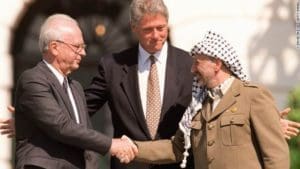
The PLO was initially committed to the annihilation of the State of Israel as a means of attaining its goal of Palestinian statehood. However, in the notable 1993 Oslo Accords, the PLO accepted Israel’s existence in exchange for formal recognition of the PLO by Israel—a great benchmark in Israeli-Palestinian relations.
The Oslo Accords were the closest thing to getting Israel and Palestine to call a permanent truce and end the conflict, but it was opposed by many staunch Zionists and Palestinian nationalists. Eventually, the peace process reached a stalemate as the Second Intifada broke out. Peace talks have been taking place sporadically for almost thirty years, but to no avail.
The Recent Escalation Between Hamas and Israel

Gaza is ruled by the Palestinian militant organization called Hamas, which has fought Israel on several occasions. Israel and Egypt closely control Gaza’s borders to prevent weapons from getting to Hamas. Things had escalated since the beginning of the holy Muslim month of Ramadan during mid-April 2021, with nightly clashes between police and Palestinians.
Hearing about the Palestinian families who have been threatened with eviction in East Jerusalem has also triggered increasing anger amongst Palestinian protesters.
In May 2021, great havoc wreaked in the Middle East, which stemmed from clashes in Jerusalem: the sacred plateau site of Al-Aqsa Mosque. The clashes were a reminder of the bloody seven-week war, which killed over 2,000 Palestinians, including hundreds of civilians, and greatly destroyed Gaza’s infrastructure. Hamas, swift to react, launched rocket missiles towards Israel.
Israel’s Iron Dome system effectively countered the rocket missiles that were aimed towards the civilians. This resulted in major casualties on both sides, especially on Palestine’s side, killing several innocent civilians who were caught in the crossfire.
The Role of External Stakeholders in the Conflict
The move to offend the status quo in Jerusalem’s Sheikh Jarrah neighborhood and on the Al-Aqsa Compound is assumed to be the trigger. Hamas was fast to escalate, losing the attention of some of the key external stakeholders from the Israeli government’s dealings.
Benjamin Netanyahu, the then Prime Minister of Israel, who fought corruption charges (and subsequently got replaced), saw this crisis to be an opportunity to make the point of him being indispensable in politics. Ironically, the same can be said of Hamas, which was keen to put forth itself as the sole popular representative of the Palestinians.
However, several important changes need to be looked at in the present context to understand the role of significant external players in future flare-ups of the crisis. There were mass protests in large cities like New York. The White House press leaks revealed that Biden had called Netanyahu (who had worked in the US for many years) six times.
It was reported that in his last call, Biden, who has known Netanyahu for forty years, decisively expressed that he wants a ceasefire at the earliest.
US leadership should enable a resolution in the region while also being indisputable about Israel’s right to exist and be recognized. (Everyone knows Israel exists, it is the acceptance by the other nations that poses the main problem).
Ever since the last century, the US’s concern in the stability of the Middle East was seen as mainly being built on the need to protect its oil supply. Any regional instability would directly have an impact on the oil supply and prices, thus sparking inflation.
Is the Israel-Palestine Conflict Ever Going to be Resolved?
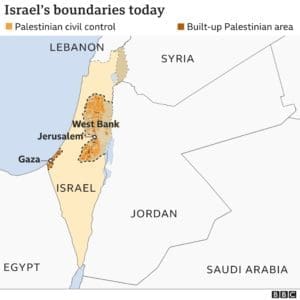
Tensions are always high between Israel and Palestinians living in Gaza Strip, West Bank, and East Jerusalem. Palestinians residing in those areas claim they suffer due to Israel’s military activities and restrictions. Israel says it is only acting to defend itself from Palestinian violence and militant terrorism.
There are numerous issues that Israel and Palestine cannot seem to reach an agreement on. These consist of a) what must be done to Palestinian refugees, b) whether Jewish settlements in the occupied West Bank should remain or be removed and, c) whether the two parties should share Jerusalem. But the trickiest of all is whether a separate Palestinian state should be created alongside Israel.
Speaking of Palestinians, neither they nor their descendants have been permitted to return to their homes by Israel. They also claim East Jerusalem as the capital of a future Palestinian state.
As for Israel, they argue that allowing Palestinians to return to their homes would tremendously threaten its existence as a Jewish state. It still occupies the West Bank, and although it pulled out of Gaza, the United Nations still regards it as part of occupied territory. Not to forget the fact that Israel claims the whole of Jerusalem as its capital.
Unfortunately, no ordinary individual would have the solution to resolve the conflict as soon as possible. It is challenging to unravel all the complex layers that make up the Israel-Palestine conflict, interspersed with ceaseless violence across the entire region, where two nations continue to fight for territory. All we can hope for is peace, which may prevail someday, and bring an end to this longstanding conflict.

Be the first to comment